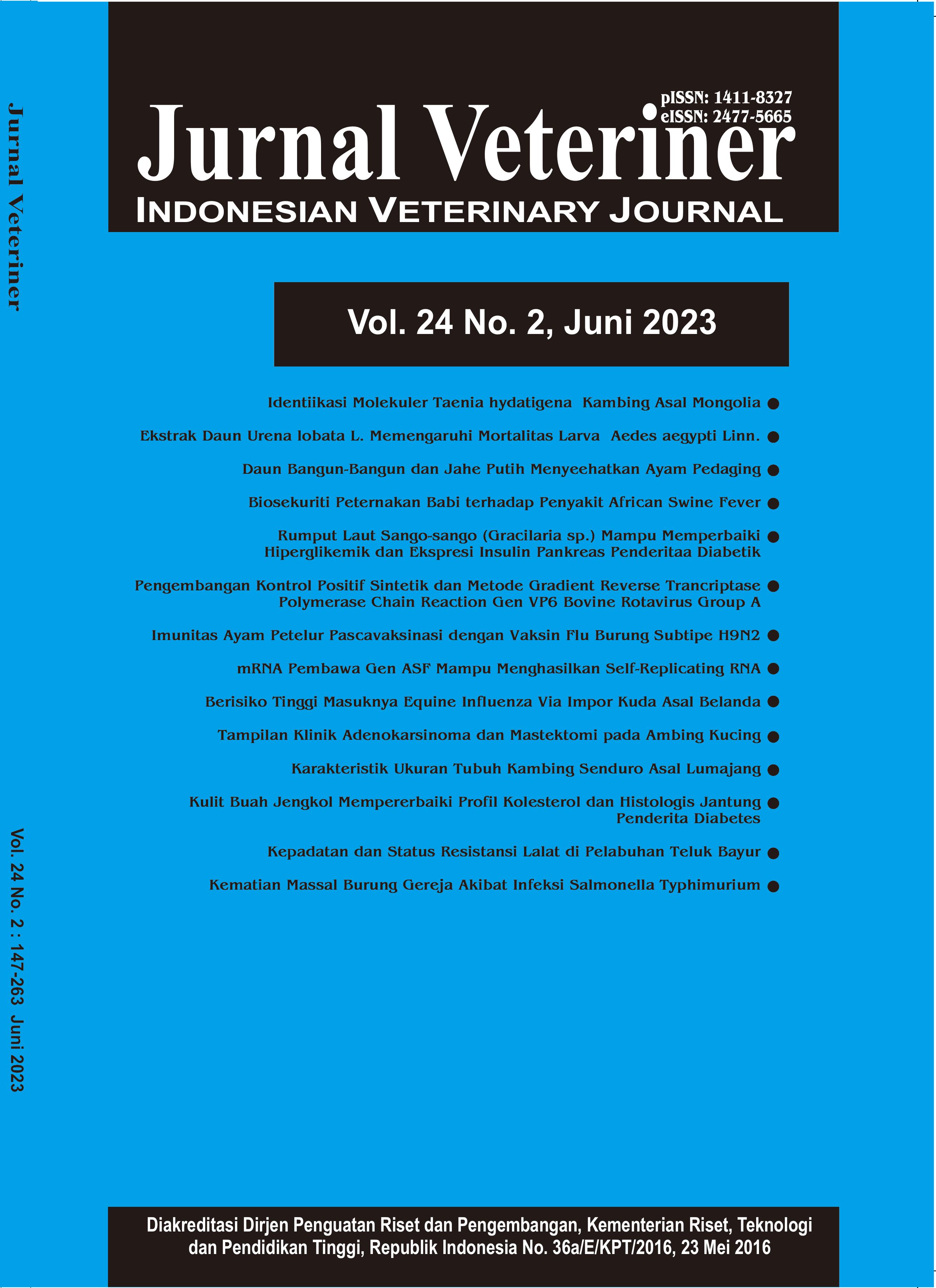Detection of mRNA and Antibody in Mice Injected with Plasmid pCDNA3.1-SRM Carrying African Swine Fever Virus Gen Able to Produce Self-Replicating RNA
Abstract
Vaccine technology and gene therapy have been well developed, in which DNA and mRNA is used as a base. This technology has a drawback as high quantities of DNA/RNA are needed, and therefore it is not feasible economically, especially for animals. Self-replicating/amplifying RNA (saRNA) is a promising technology to cope with the drawback of DNA and mRNA vaccines. A pCDNA3.1-SRM plasmid with a gene of picornavirus encoding polymerase enzyme and 5’-and 3’-untranslated region (UTR) might produce saRNA to be used as a vaccine. In this research, the pCDNA3.1-SRM plasmid was inserted with DNA “ASF-276R-224L” encoding antigens for the African swine fever (ASF) virus. The main aim of this research was to compare the amount of mRNA and antibody of the pCDNA3.1-SRM vaccine with the pCDNA3.1 without polymerase gene as a control vaccine in mice. A total of 46 mice were divided into four groups according to the amount of plasmid per vaccine and type of plasmid. The mRNA quantity was obtained from CT-Values in the qRT-PCR analysis of mice thigh muscles that were sampled at day 3, 6, and 9 postinjections. African swine fever antibodies were measured using ELISA applying synthetic peptides and the optical density (OD) were statistically analysed using T-test method. The results of both mRNA quantity and antibody level of pCDNA3.1-SRM were found to be higher when compared to the control vaccine, but they are not significantly different statistically (p>0.05). For future research, it is recommended to improve the construction of pCDNA3.1-SRM plasmid.



















